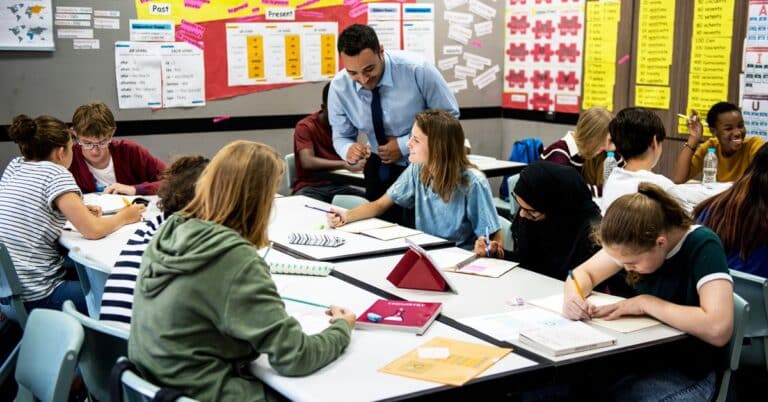In Finding Your Path: A Navigation Tool for Scaling Personalized, Competency-Based Learning, one of the competencies for professional development and learning is on collaboration: learning communities will implement systemic structures and protocols that sustain a learning culture that is based on support and sharing. But what does it look like to lead a collaborative team?
Robert Knisely, principal at Perry Middle School in Perry, Ohio, joined a virtual discussion with Lead for Learners to share Perry Middle School’s journey in advancing the shift towards authentic learning and what it takes to lead these collaborative efforts effectively. To improve student engagement and overall personalized learning experiences, Perry Middle School partnered with the Ohio Personalized Learning Network in 2021 to guide their transformative change. Knisely expressed how important it was to develop the right team to grow and sustain learner-centered practices and highlighted five essentials for their collaborative team environment.
1. Determine your need
According to Knisely, “Our need was student engagement. If I could create a perfect environment for them, a school environment, what would their perfect classroom environment look like, what their instruction would look like, what kids would be doing, what you would hear and see in the classroom?”
2. Extend support
“Don’t be afraid to roll up your sleeves and help!” As an administrator, joining a classroom to co-teach social studies or conducting small group sessions were just some examples demonstrating Knisely’s hands-on approach to a common vision with shared ownership.
3. Bridge connections
Knisely emphasized the significance of continuous improvement by networking with other like-minded individuals, leaders and professional networks. According to Knisely, “We sought schools that were trying to do the same things that we were trying to do. We did some site visits to see it in action.” Fostering these relationships not only presented collaborative opportunities, but also allowed Knisely to tap into relevant resources to support his team with.
4. Challenge and take risks
Prior to joining the Ohio Personalized Learning Network, the team explored various instructional approaches, but struggled to find one that met their needs. For Knisely, it was important to recognize that “change involves risk. Risk is okay. But if you’re going to fail, fail forward. And there were. We had lots of failures along our implementation journey, and we’re still not done failing.”
5. Embrace flexibility
“If you don’t adjust and adapt, nothing’s going to work for you,” Knisely said. “You have to be able to do that. And it’s got to be constant, consistent. You have to model that so that your teachers have the ability to do that, as well.”
Watch the highlight video from his Ask Me Anything below.




